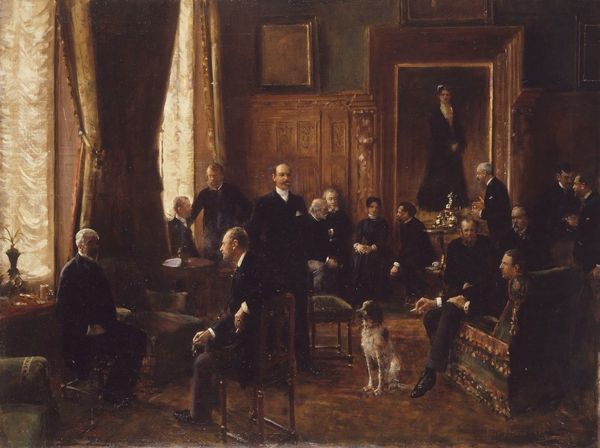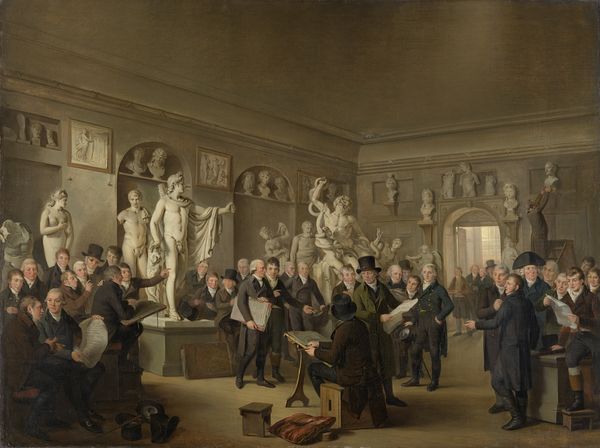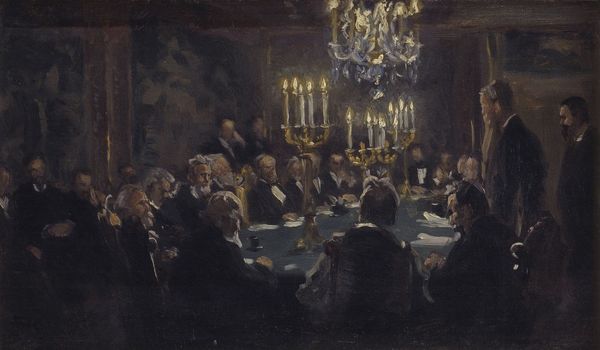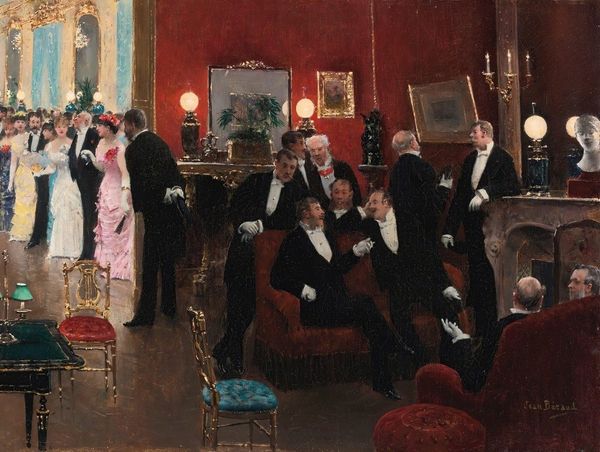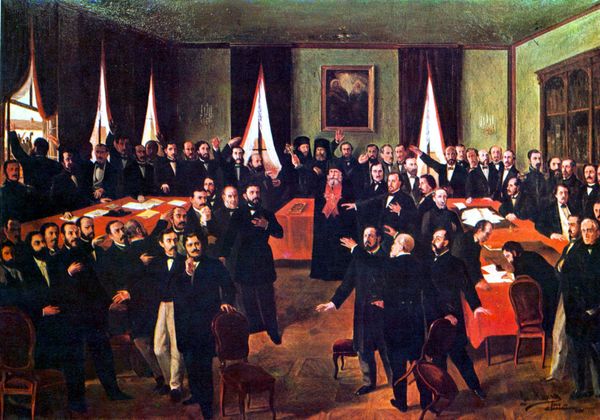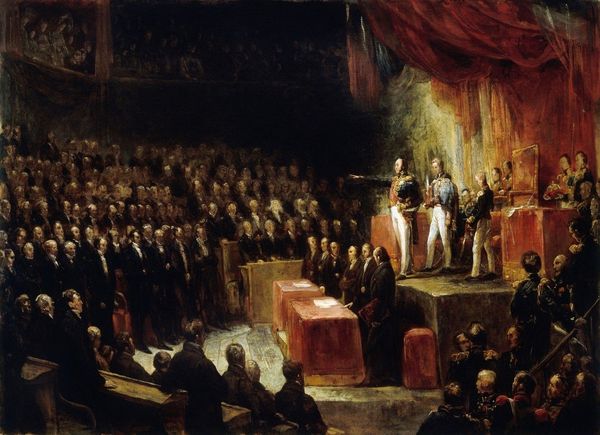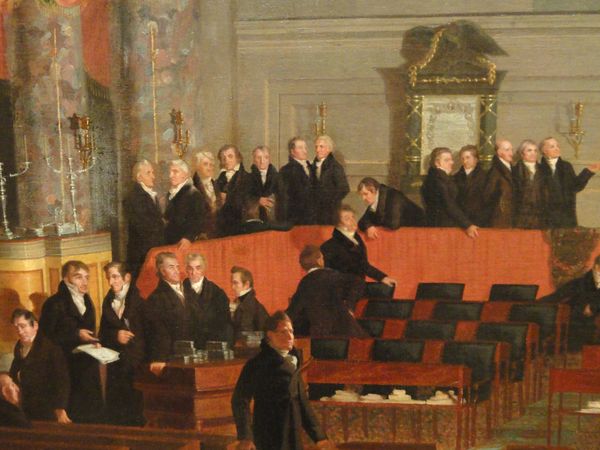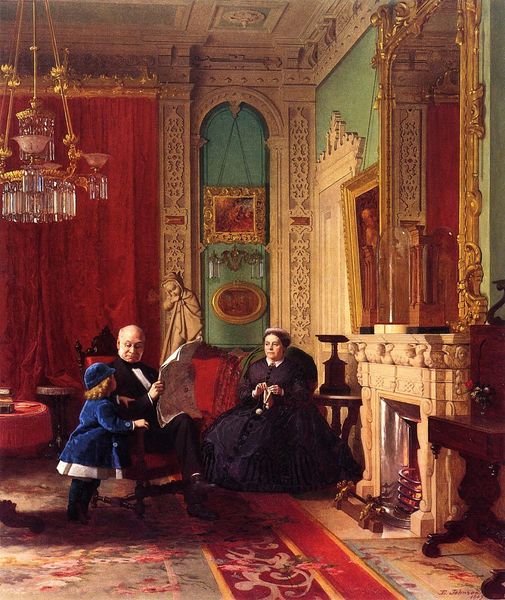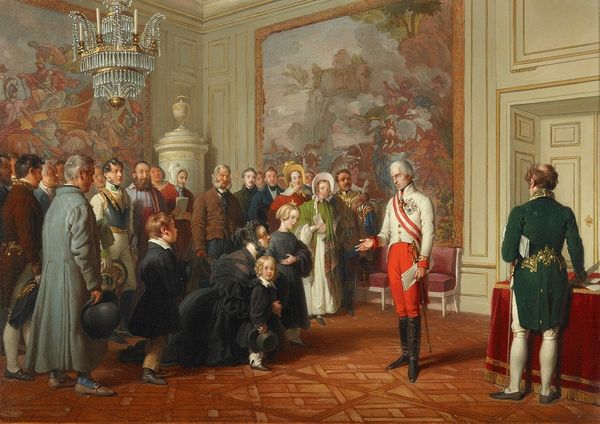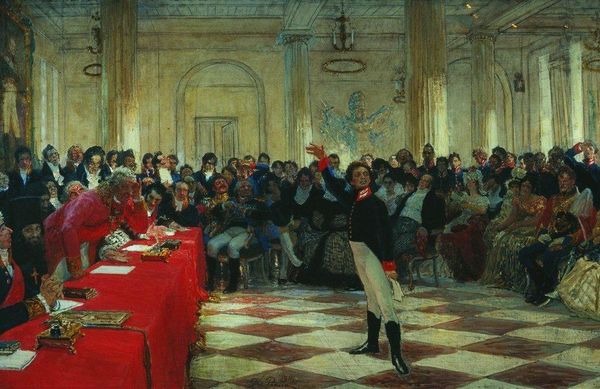
The Opening of the Modern Foreign and Sargent Galleries at the Tate Gallery, 26 June 1926 1926
0:00
0:00
#
glasgow-school
Copyright: Public domain
Curator: Here we have Sir John Lavery’s “The Opening of the Modern Foreign and Sargent Galleries at the Tate Gallery, 26 June 1926," an oil painting completed in 1926. The artwork portrays a scene of cultural significance, capturing the inauguration of new gallery spaces. What strikes you first about it? Editor: I'm immediately struck by the formality and almost suffocating air of importance. Everyone is so stiff, the colours are muted, and yet it aims to represent a celebration. Curator: That stiffness reflects the painting's role in documenting a pivotal moment in the Tate's history. Lavery, as a prominent portraitist, was commissioned to capture the elite who shaped the British art scene. We see figures from royalty to prominent gallery directors. Editor: And who got to shape art institutions had so much influence on which voices were amplified. I wonder how representative those assembled were of broader artistic currents at the time? There are virtually no women or minorities in this picture. Curator: Precisely. Lavery presents an establishment view of the art world. The composition is classical in its arrangement, almost staged, highlighting the power dynamics at play. Editor: The positioning seems carefully calculated. It makes me consider who is included and excluded from the narrative. What message are we being sold about taste, progress, and belonging in the arts? The muted colors, all the dark suits… are we celebrating progress or reasserting tradition? Curator: Absolutely. Beyond merely documenting, the painting is an exercise in constructing cultural authority. The emphasis on the "modern foreign" and Sargent suggests a willingness to engage with international trends, but on the establishment’s terms. Editor: Looking closer, you notice the landscapes and portraits which form the backdrop and reinforce a subtle Britishness which feels very different to the actual 'modern, foreign' currents taking hold in Europe. Curator: A very astute observation, indeed. The image underscores how institutions shape narratives around artistic value, perpetuating the dominant power structures. Editor: It serves as a powerful reminder that visual representations in art institutions are never neutral; they're always political acts. By documenting that day in paint, Lavery crystallized this for us. Curator: It is fascinating to see how a formal celebration becomes an invitation for broader cultural examination through this piece.
Comments
No comments
Be the first to comment and join the conversation on the ultimate creative platform.
